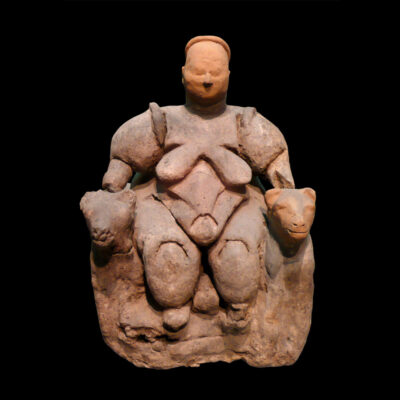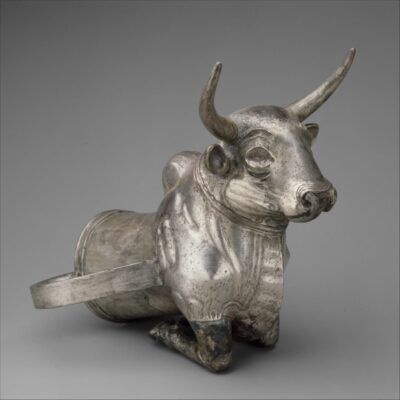Arte de la Anatolia antigua
Un puente entre dos mundos
“Los hititas nos fascinan no sólo por la influencia que ejercieron en su día sobre el llamado Pueblo Elegido, no sólo porque una hitita fuera la esposa de David y la antepasada de Cristo, sino también por la deuda que la civilización de nuestra Europa tiene con ellos. Nuestra cultura es la herencia que hemos recibido de la antigua Grecia, y los primeros comienzos de la cultura griega se derivaron de los conquistadores hititas de Asia Menor … Los hititas llevaron las ya viejas civilizaciones de Babilonia y Egipto hasta el límite más lejano de Asia, y allí las entregaron a Occidente en el gris amanecer de la historia europea.”
A. H. Sayce: Los hititas: La historia de un imperio olvidado
Imágenes: Mujer sentada de Çatalhöyük, c. 6000 a.C. Foto de Nevit Dilmen ·· Vasija hitita en la forma de la parte delantera de un toro, c. siglo XIV-XIII a.C. Imagen: Museo Metropolitano de Arte
Anatolia, el Asia menor, es la enorme península que ocupa la mayor parte de lo que hoy es Turquía. A excepción de sus costas, y de algunas zonas relativamente llanas en el sur y en el extremo oeste, está dominada por una inmensa meseta de clima bastante extremo, rodeada por imponentes cadenas montañosas.
Aunque hasta hace relativamente poco tiempo el conocimiento de la cultura y el arte de la región prácticamente se limitaba a la del pueblo hitita (además de, evidentemente, las ciudades fundadas por los griegos en la costa oeste), las recientes excavaciones realizadas en la zona han sacado a la luz la existencia de asentamiento neolíticos de enorme importancia, como Aşıklı Höyük o Çatalhöyük. En este último, que pudo haber sido uno de los conjuntos urbanos más poblados de su época en todo el mundo, se han hallado interesantes ejemplos de arte, como la llamada “Mujer sentada de Çatalhöyük”, parte de un grupo de más de 2.000 estatuillas realizadas en materiales diversos. De gran importancia son también los hallazgos de Hacilar, cultura emparentada con la ya mencionada Çatalhöyük.
El primer gran imperio de Anatolia fue el de los Hititas, que dominaron la región entre los años 1650 a.C. y 1180 a.C., cuyo arte destacó en el manejo de los materiales preciosos, como la plata o incluso el oro. Un recipiente en forma de la parte delantera de un toro, propiedad del Metropolitan Museum of Art, es buen ejemplo de esto.
G. Fernández · theartwolf.com
Follow us on:


